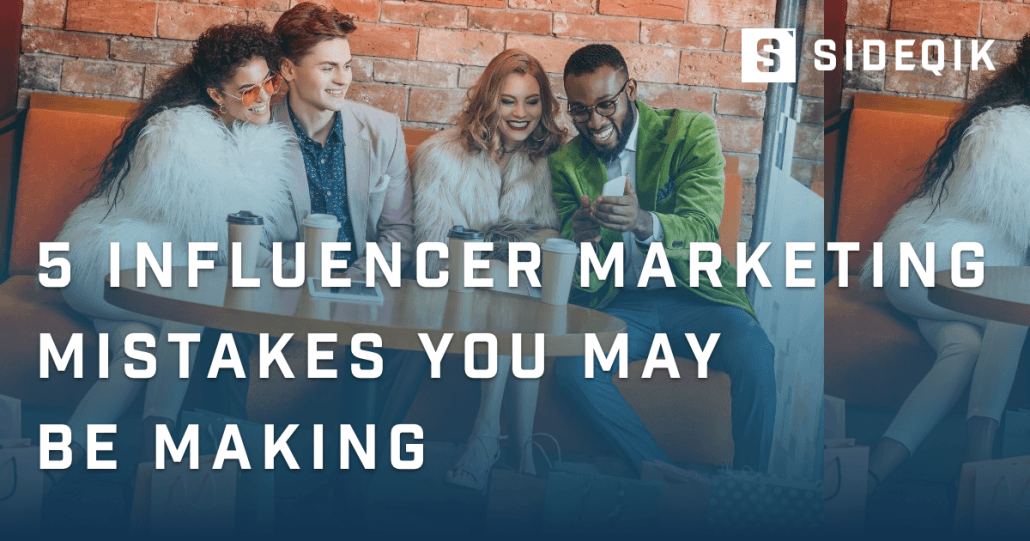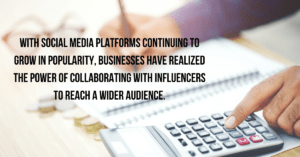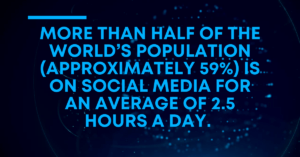Influencer marketing has a proven track record of increasing conversions, brand awareness, and many other key performance indicators you may be working toward. In fact, according to marketing guru Neil Patel, influencer marketing has a $23 return on investment dollar for dollar. That’s more than 10x the performance of an average banner ad. But those results are only if you’re doing everything right. Here are 5 influencer marketing mistakes you may be making.
1. Choosing the wrong influencer
We’ve all seen brands do this. Whether its because they want a flashy name a la the Kendall Jenner Pepsi scandal, or they just didn’t look into the right audience demographics, choosing the wrong influencer is one of the biggest influencer marketing mistakes.
Sure while some influencer will say yes to anyone for the right amount of money, you want brand partnerships to look believable. One high profile example of getting it right these days is Whole Foods’ partnership with newly minted celeb Antoni, from Netflix’s Queer Eye. It makes sense that the food and wine guy would connect with the high-end grocer. And even if he’s just doing it for the paycheck, his captions about shopping at the store feel heartfelt, which is much more likely to sway potential buyers than a cut-and-paste script.
A post shared by Antoni Porowski (@antoni) on
Solution: Always research your influencers. Make sure they are talking about things in your space to an audience that’s passionate about those same talking points. (OK, some of Antoni’s followers may just be passionate about his abs, but some care about food!).
2. Choosing the wrong platform
Your boss is telling you Instagram sees the highest returns, so you set out to find an Instagram influencer. But if you’re an experiential product, a static image or even a 10-second story may not be enough. Sometimes influencer marketing is about more than the biggest numbers. It’s about reaching the highest number of people who are going to be passionate about your product. So don’t go where your customers aren’t just because it’s trendy to work on one platform or another.
Solution: Just like when choosing an influencer, make sure you’re doing your research into audience demographics before you tap someone. It could seriously change your mind about who to work with.
3. Not setting the right guidelines
We get it. Giving up control of your marketing messaging can be scary. But when it comes to influencers, they’re the experts at talking to their audience.
In a recent article about female YouTubers, Buzzfeed found that “a common refrain among viewers is that advertising in videos is reasonable as long as it’s not too overt.” That means lackluster product shots and pre-written scripts are out.
The whole reason businesses are moving toward influencer content instead of straightforward celebrity endorsements or expensive ad campaigns is that audiences appreciate authenticity.
According to a 2014 study by Hunter Qualitative Research commissioned by digital-media firm Defy Media, 63 percent of millennials (respondents 13-24) said they would try a product or brand recommended by a YouTube personality, versus only 48 percent who said the same about a TV or movie star. That means influencer content counts more for younger demographics.
Let your influencer have some creative license. They didn’t amass their massive following without knowing what their audience (and your target demographic) wants to see. Sure, maybe they won’t hit all the tech specs. Maybe they’ll even notice that one design element that is quirk-some, but it’s that failure to meticulously detail every benefit of your business that speaks to viewers.
4. Not using the right metrics
According to Influencer Marketing Hub, 84 percent of marketers judge influencer marketing to be effective. But here’s the thing, how are they judging that? Results in influencer marketing can feel ephemeral and hard to measure. Like any good marketing, you want metrics to show how well you’re plan is working.
Some easy metrics to keep in mind are cost per impression/engagement and for posts that have trackable links or codes, sales per dollar spent.
Total Influencer Marketing Cost ($) / Total Reach (or Engagement) = Cost ($) per Reach (or Engagement)
Total revenue or sales ($) / Total influencer marketing cost ($) = Sales ($) per dollar of influencer marketing ($)
If you need more tips on how to measure your influencer marketing efforts effectively, check here.
5. Failing to follow up
As our customer Coca-Cola puts it, influencer marketing is about building lasting relationships with your influential fans. What’s the point of reaching out to an influencer if it’s only going to be a one-time contract. Sure, if you’re using mini-celebrities like the Queer Eye guys (look, it’s a really good show OK) it may not make sense to cultivate an ongoing relationship, but even influencers with millions of fans can become brand advocates if you nurture your relationship.
Solution: Go ahead and send that thank you basket. Share their posts, and make sure the last time you talk to an influencer isn’t just when you’re cutting a check. Because if you do, you’re making a big mistake.
You got this.







